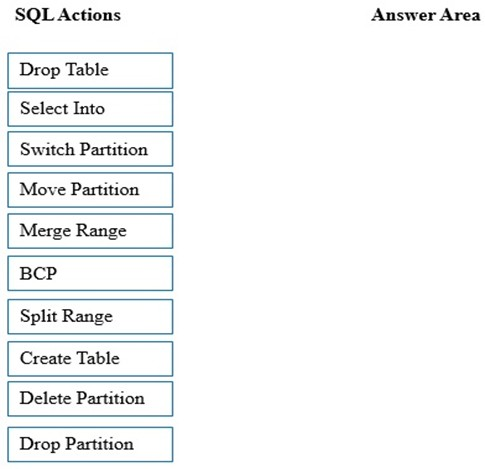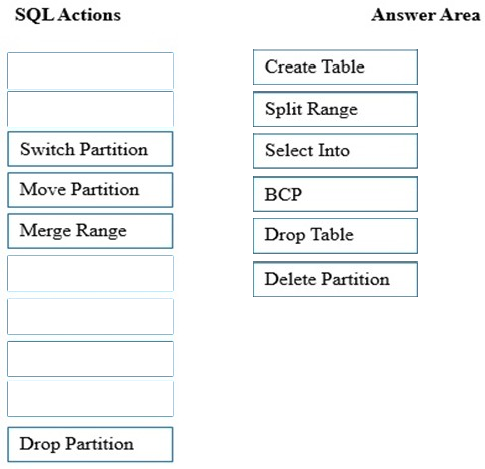

DRAG DROP -
You use SQL Server 2014 Enterprise Edition.
Your database contains a partitioned table named AuditData. AuditData is partitioned by year. Partition 1 contains data from the year 2010 and prior.
Management has decided to archive all AUDITDATA records from 2010 and prior.
Management wants the records to be removed from the database entirely and provided to the backup team as a zipped text file. The data must no longer reside in the database.
There is very little tolerance for performance degradation in your environment. You need to remove all 2010 and prior data from the AuditData table by using the least amount of system resources possible. Develop the solution by selecting and arranging the required SQL actions in the correct order.
You may not need all of the actions.
Select and Place:

maxelx
Highly Voted 5 years, 5 months agoIva10
5 years, 1 month agoAnette
Highly Voted 4 years, 9 months agonorbert1
Most Recent 4 years, 10 months ago